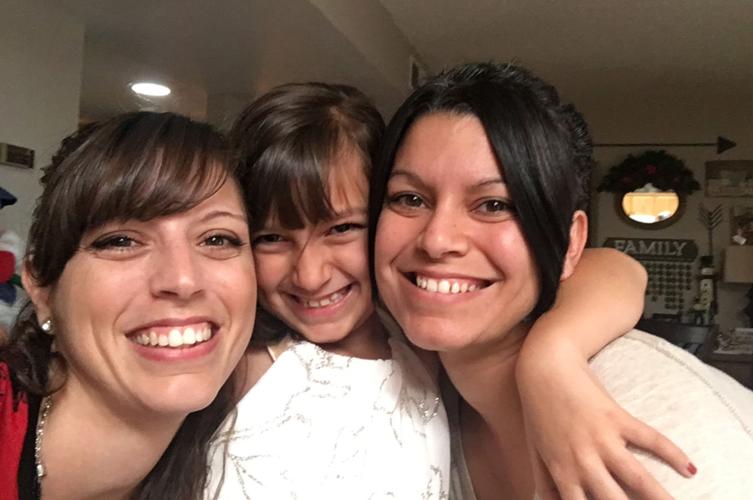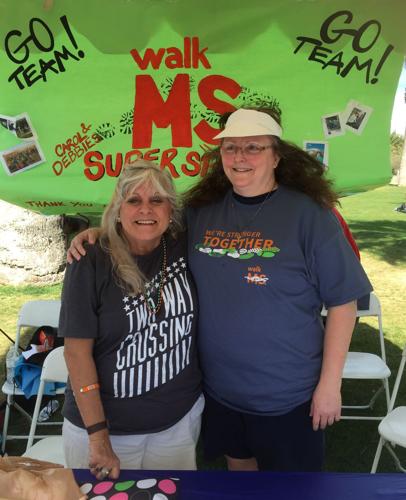Volunteers with several local fundraising walks are taking advantage of the spring-like weather to promote awareness and raise research funds for nerve diseases that often fly under the radar.
“CMT is often known as the most common disease that no one has ever heard of. One in every 2,500 people have it, so it is surprising that when I mention it to people, most of them have no idea what it is,” said Kristen Oaxaca, coordinator of Bailey’s Beat the Bite 5K Walk 4 CMT (Charcot-Marie-Tooth Disease) on March 25 at Continental Ranch Neighborhood Park in Marana.
The walk is inspired by 7-year-old Bailey Roestenburg, Oaxaca’s niece by her sister, Vanessa Roestenburg.
Bailey has CMT, a group of inherited nerve disorders that cause peripheral neuropathy — an increasing numbness or pain that results in muscle atrophy and sensory loss in the arms and legs. The disease also causes chronic pain and fatigue; other symptoms are weakness, foot deformity, foot drop and difficulty with balance. More than 90 types of CMT caused by different genetic mutations have been identified.
“There is no cure for CMT and since there are so many different types, if they find a cure for one type, that doesn’t necessarily mean it will be a cure for the others,” said Vanessa, a single mom who suspected CMT when Bailey began falling constantly at age 3.
Bailey’s diagnosis was confirmed a year later. “Fortunately, Bailey takes nightly nerve medicine to help with the pain caused by her nerves constantly trying to ‘talk’ to her muscles. I have heard it described as a burning, tingling feeling in the muscles of the legs, feet, arms or hands.”
Vanessa said that coming to terms with limitations imposed by the disease has not been easy.
“When Bailey was 5, she asked me if she was going to get better and I had to explain that she wasn’t. There were lots of tears on both ends and lots of emotions on her end — she was angry and scared. ... She is constantly saying, ‘I just want to be like everybody else,’” Vanessa said.
Now, Bailey wears ankle-foot braces to assist with mobility and though she gets fatigued and becomes frustrated when she can’t keep up with her peers, Vanessa said her daughter doesn’t let it consume her. The aspiring artist is also learning to direct herself toward activities that don’t require sustained active movement.
“It takes twice as much energy for people with CMT to do what we do. But Bailey goes, goes, goes, and doesn’t let it stop her. She is willing to try anything,” said Vanessa, a teacher.
The nonprofit Charcot-Marie-Tooth Association has embraced a similar philosophy.
Dedicated to finding treatments and cures for CMT and improving the lives of those with the disease, the organization utilizes an initiative called STAR, or Strategy to Accelerate Research, in which scientists share ideas and findings to advance research as quickly and effectively as possible. CMTA also offers a database of CMT patients along with support and resources for those living with CMT and their families; a network of volunteers also promotes awareness and assists with fundraising efforts .
“This inaugural walk is kind of a groundbreaker for more walks in the future. We want to raise awareness about the disease and are hoping to help find a cure. I am hoping one day that I can look at Bailey and say, ‘They have it figured out. We can fix this.’ That would be my ultimate dream,” Vanessa said.
MS is ‘quiet disease’
Carol Hunter has a similar dream regarding multiple sclerosis, a chronic autoimmune disease in which the body attacks the myelin sheaths surrounding nerves, impairing normal function of the central nervous system. The disease, which generally takes four courses of varying severity, can manifest with symptoms such as optic neuritis; fatigue; numbness in the limbs; problems with walking, balance and coordination; loss of vision and hearing or speech problems; and paralysis.
Diagnosed more than 20 years ago, Hunter said she feels fortunate to be very high-functioning: She uses a walker, is able to drive her car with hand controls and remains active with a home business.
Additionally, for more than a decade, she has been a volunteer with Walk MS Tucson, which will be held Saturday at Reid Park.
Hunter is also co-leader of the Northwest Tucson MS Support Group, which meets the second Wednesday of each month from 10 a.m. to noon at Casas Adobes Congregational Church, 6801 N. Oracle Road. She said the meetings — which are open to those with MS as well as their families and caregivers — provide not only a venue for camaraderie and support, but also education and information about community resources along with medical, research and treatment updates.
“MS is so variable and affects everyone in different ways. One of the nice things about the support group is that it helps you to learn a lot about the disease. You learn what to look for and how to work with it and it prevents you from becoming isolated, which often happens to people who have chronic illnesses,” Hunter said.
Lisa Cleary, senior manager of corporate relations for the National MS Society Arizona chapter, believes that community outreach and education about the impact of MS is key to funding research toward new treatments and a cure. She said many people don’t realize that about 8,000 Arizonans are living with the disease and that it affects more than 45,000 caregivers and family members statewide.
Cleary hopes the walk will raise at least $65,000 to fund critical research, programming and services for those impacted by MS, while helping to bring the disease out of the shadows.
Contact freelance writer Loni Nannini at ninch2@comcast.net.





